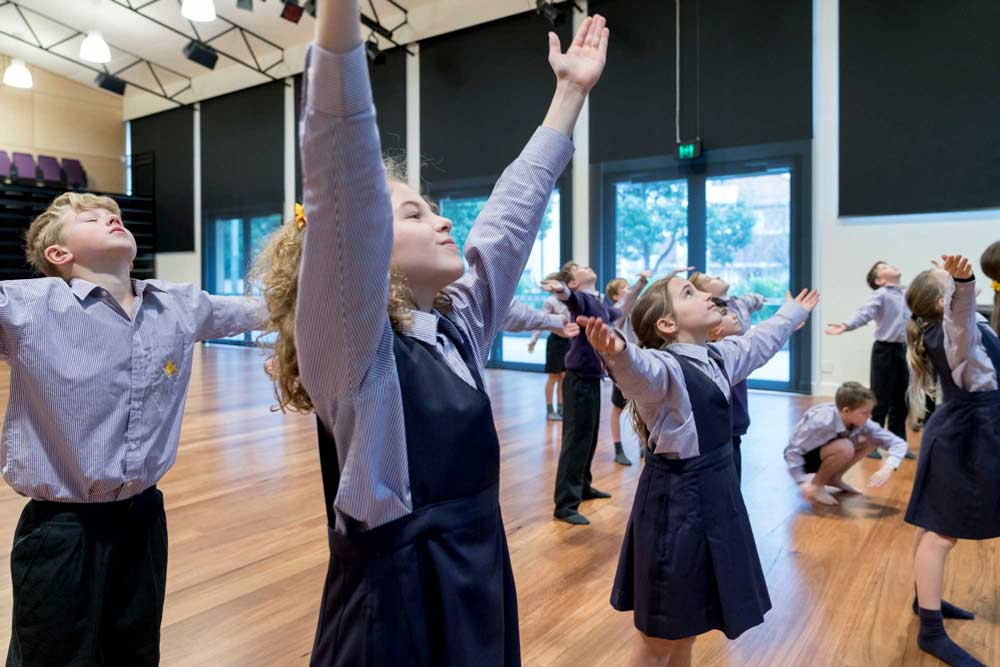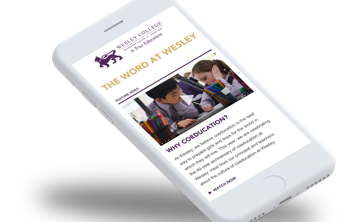
Emma Barbero investigates the benefits of the performing arts in a progressive, integrated and interdisciplinary curriculum.
According to Sir Ken Robinson, presenter of the most popular TED Talk of all time, dance is just as important as mathematics in schools. A speaker at last year’s National FutureSchools Conference, he told Age journalist Henrietta Cook, ‘Someone tweeted at me and said, “So are you are saying salsa is as important as calculus?” As it turns out, yes, it is,’ he said. According to Sir Ken, previously Professor of Education at the University of Warwick in Britain and now Professor Emeritus, dance improves students' relationships, memory, concentration and classroom behaviour.
The salsa and calculus language of the Age article may lend itself to an over-simplifying zero-sum argument, so it’s worth noting that Sir Ken’s point is that the arts and maths are both important, not that one should replace the other. That’s why teaching and learning programs at Wesley are both broad and deep. Our holistic approach to the curriculum is predicated on the view that there is room for both, and more.
Integrated and interdisciplinary learning
The integrated and interdisciplinary approach to learning at Wesley is enabled by the design of our curriculum. Following the International Baccalaureate Primary Years Program (PYP), Middle Years Program (MYP) and Diploma Program or VCE, our progressive curriculum continuum enables students to develop the application, analysis, reflection, synthesis and evaluation skills that underlie all learning, from fact finding and interpretation to problem solving and creation.
Of course, creativity isn’t the exclusive domain of the arts. Consider the way we think about creativity: creative writing, models of Roman villas and science poster reports are all creative, but so too is a maths student’s elegant and efficient multiplication strategy, a science student’s novel experimental design, even a Junior C tennis player’s well-constructed point.
Creativity underpins the conceptualising, prototyping, problem solving, collaborating and investigating or hypothesising that lie at the heart of all disciplines, but it’s clearly evident in the processes and products that emerge when students are learning in the visual arts and the performing arts – music, dance and drama.
Reflection and cooperation
Time for reflection plays a key part in our arts program. Reflection in visual art, music, dance and drama enables students to understand not only their own artistic process and finished products but also their artistic intentions. It’s fair to think of reflection as a skill in questioning, but reflection is, more fundamentally, a process that helps students to develop attitudes or habits of mind and values to do with curiosity and discovery, asking not, ‘What for?’ but ‘What if?’
The arts also promote many social skills, such as empathy, tolerance, negotiation and cooperation. Again, these can be thought of as skills, but the attitudes and values behind them are reinforced daily in each arts class through the PYP and MYP approach to teaching and learning. Collaborative group activities in the arts disciplines enable students to gain confidence, develop persistence and practise tolerance by using different forms of expression.
Collaboration
The really exciting thing is that collaboration in the arts isn’t simply a way to promote good social behaviours and attitudes; it’s an end in itself. Why? Because collaboration is fundamental to the act of creation. The collaborative process is an essential tool in the creating, making and performing of many artforms. That’s something a talented individual called William Shakespeare clearly understood. As Gary Taylor, Professor of English at Florida State University, has pointed out, ‘Shakespeare’s is the only hand in less than two-thirds of the plays that Shakespeare had a hand in.’ Shakespeare was a true collaborator, workshopping his plays with actors and fellow playwrights, rather than writing alone.
The performing arts, as Shakespeare knew, enable us to explore problems and evolve ideas, solutions and actions that are not always apparent or available to the individual. Developing both the technical skills and a knowledge of the elements of design associated with the performing arts enables a richer, more articulate and diverse communication of the ideas, feelings and beliefs we choose to express through an artform. In the performing arts, the opportunity to develop, practise and implement the skills and knowledge gained from creating, making, presenting and responding gives each individual student a better understanding of and confidence in their own intellectual, imaginative and expressive potential.
That doesn’t mean that the visual and performing arts should replace, say, maths or science, because maths or science are just as important. The good news is that creativity lies at the heart of all learning, and an integrated and interdisciplinary approach to learning across the curriculum means that students have continuous opportunities to learn and transfer their learning from one discipline to another.
Emma Barbero is the Primary Years Program Head of Learning – The Arts at Wesley’s Elsternwick Campus.
